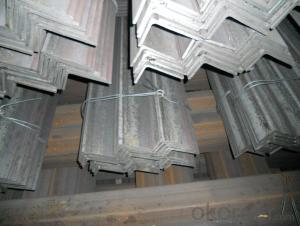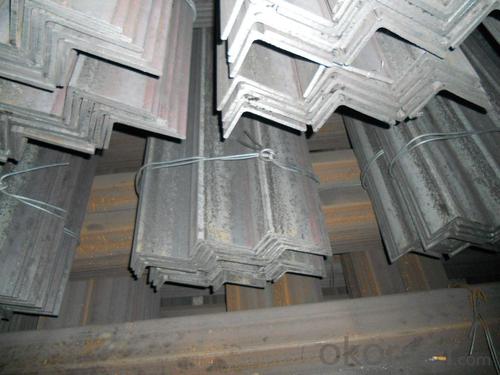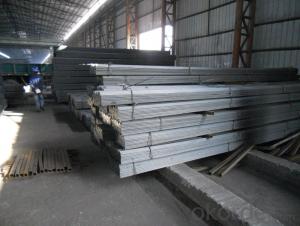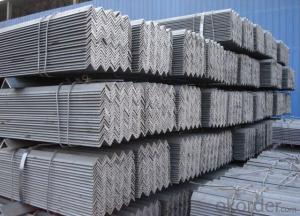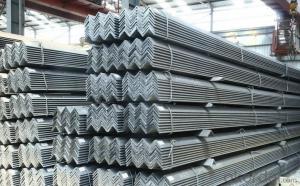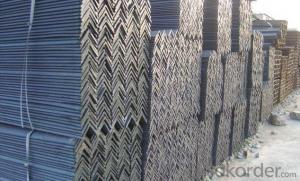Steel Unequal Angle with Good Quality 75mm*50mm
- Loading Port:
- Tianjin
- Payment Terms:
- TT OR LC
- Min Order Qty:
- 100 m.t.
- Supply Capability:
- 15000 m.t./month
OKorder Service Pledge
OKorder Financial Service
You Might Also Like
Specification
Specifications of Steel Unequal Angle with Good Quality 75mm*50mm
1. Invoicing on theoretical weight or actual weight as customer request
2. Length: 6m and 12m
3. Sizes:
| Size(mm) | Mass(kg/m) | Size(mm) | Mass(kg/m) |
| 75*50*5 | 4.8 | 75*50*8 | 7.43 |
| 75*50*6 | 5.66 |
Packaging & Delivery of Steel Unequal Angle with Good Quality 75mm*50mm:
1. Packing: it is nude packed in bundles by steel wire rod
2. Bundle weight: not more than 3.5MT for bulk vessel; less than 3 MT for container load
3. Marks:
-Color marking: There will be color marking on both end of the bundle for the cargo delivered by bulk vessel. That makes it easily to distinguish at the destination port.
-Tag mark: there will be tag mark tied up on the bundles. The information usually including supplier logo and name, product name, made in China, shipping marks and other information request by the customer.
If loading by container the marking is not needed, but we will prepare it as customer request.
FAQ:
Q1: Why buy Materials & Equipment from OKorder.com?
A1: All products offered byOKorder.com are carefully selected from China's most reliable manufacturing enterprises. Through its ISO certifications, OKorder.com adheres to the highest standards and a commitment to supply chain safety and customer satisfaction.
Q2: How do we guarantee the quality of our products?
A2: We have established an advanced quality management system which conducts strict quality tests at every step, from raw materials to the final product. At the same time, we provide extensive follow-up service assurances as required.
Q3: How soon can we receive the product after purchase?
A3: Within three days of placing an order, we will begin production. The specific shipping date is dependent upon international and government factors, but is typically 1 to 2 months.
Q4: How many tons per bundle?
A4: Around 2-3tons
Q5: How many tons can be loaded into one 20ft container?
A5: Around 23—25tons(6m)
Q6: How many tons can be loaded into one 40ft container?
A6: Around 23—25tons(12m)
Q7: How to avoid the rust after deliver the goods to the loading port?
A7: We will keep the goods at the port covered with water-proof material
Production flow of Steel Unequal Angle with Good Quality 75mm*50mm:
Material prepare (billet) —heat up—rough rolling—precision rolling—cooling—packing—storage and transportation
Images of Steel Unequal Angle with Good Quality 75mm*50mm:
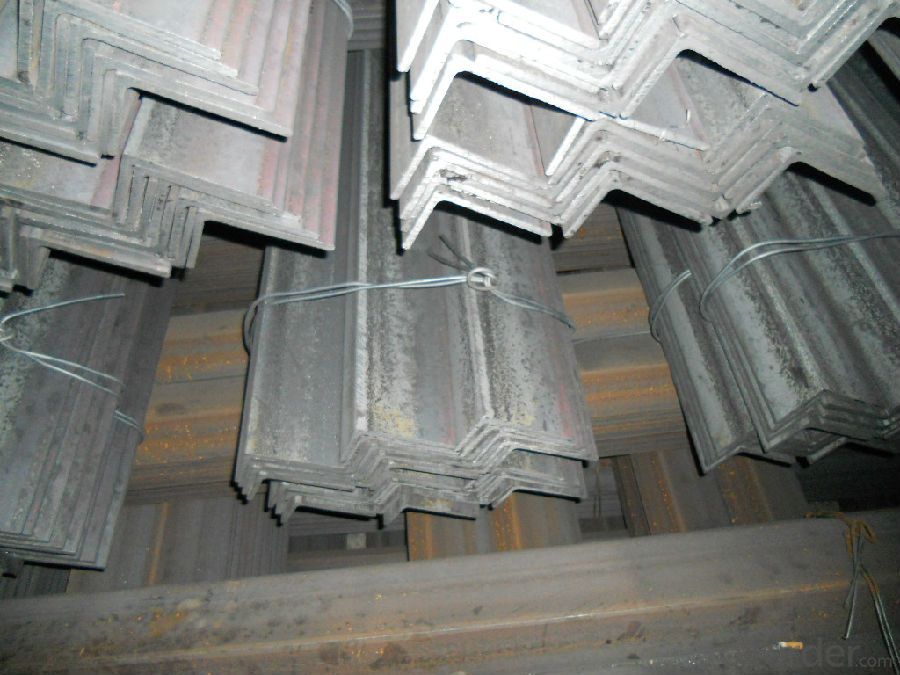
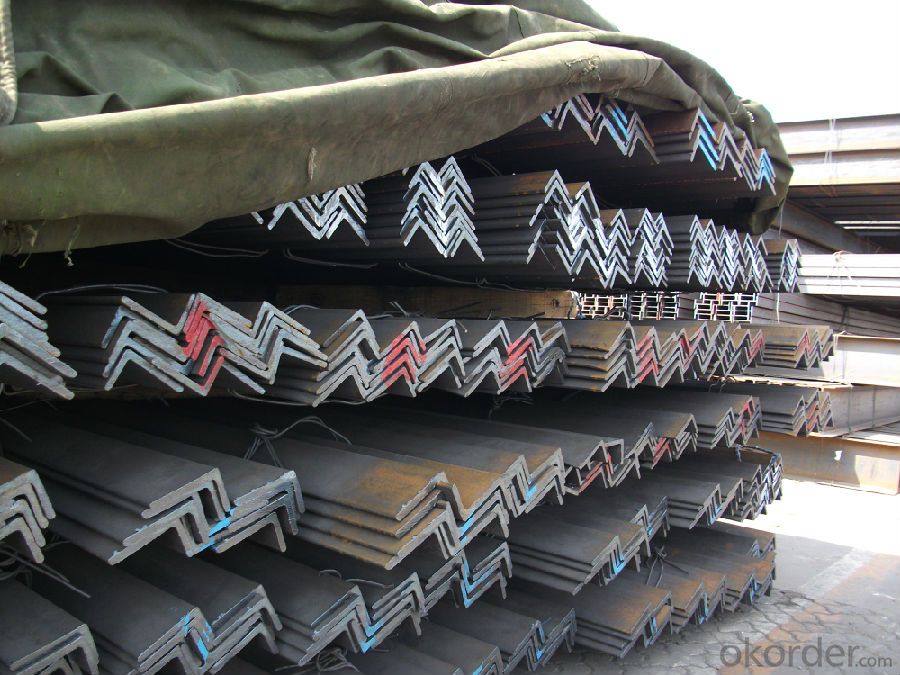
- Q: What are the different types of steel angles used in agriculture?
- There are several different types of steel angles used in agriculture, each with its own unique purpose and function. One common type is the standard angle, which is typically used for general construction and support applications. These angles have a 90-degree bend and are often used to reinforce structures such as barns, fences, and gates. Another type is the corner angle, which is specifically designed for creating corners or joints in agricultural structures. These angles have equal legs and are typically used to provide additional strength and stability at the corners of buildings, enclosures, or equipment. Slotted angles are also commonly used in agriculture. These angles have pre-drilled holes along their length, allowing for easy attachment of various components such as shelves, brackets, or hooks. They are often used in storage areas or workshops to create custom shelving or storage solutions. Additionally, there are specialized steel angles used for specific agricultural applications. For example, rack angles are used to support and secure storage racks for hay or other agricultural products. Purlin angles are used to support roof structures or provide additional strength to roof trusses in agricultural buildings. Overall, the different types of steel angles used in agriculture serve various purposes, including structural support, reinforcement, joint creation, and customized storage solutions. The specific type of angle used will depend on the specific requirements and needs of the agricultural project or structure.
- Q: How do you prevent steel angles from sagging?
- Steel angles can be prevented from sagging by providing adequate support and reinforcement. This can be achieved by using additional structural steel elements such as beams or columns to provide continuous support along the length of the angle. Additionally, appropriate fastening techniques, such as welding or bolting, should be used to ensure a secure connection between the angle and the supporting structure. Regular inspection and maintenance are also essential to detect any signs of sagging and take necessary corrective measures in a timely manner.
- Q: Can steel angles be used in the construction of warehouses?
- Yes, steel angles can be used in the construction of warehouses. Steel angles are commonly used as structural components in various construction projects, including warehouses. They provide strength and stability to the structure, making them suitable for supporting heavy loads and withstanding the demands of warehouse operations. Additionally, steel angles can be easily fabricated, installed, and connected, making them a cost-effective and efficient choice for warehouse construction.
- Q: What are the different methods of surface painting for steel angles?
- There are several different methods of surface painting for steel angles, including brush painting, spray painting, and powder coating. Brush painting involves applying paint directly onto the surface using a brush or roller. Spray painting uses a paint gun to evenly distribute paint onto the surface. Powder coating involves applying a dry powder to the steel angle and then curing it in a high-temperature oven, resulting in a durable and long-lasting finish.
- Q: Can steel angles be used in cold-formed steel construction?
- Yes, steel angles can be used in cold-formed steel construction. Cold-formed steel construction involves the use of thin gauge steel sheets that are formed into various shapes and profiles, including angles. Steel angles are commonly used in cold-formed steel construction for a variety of applications, such as framing systems, support members, and bracing elements. They provide structural strength, stability, and can be easily connected or welded to other cold-formed steel components. Additionally, steel angles can be customized and fabricated to meet specific project requirements and design specifications in cold-formed steel construction.
- Q: What are the common design codes and standards for steel angles?
- The common design codes and standards for steel angles depend on the specific application and industry requirements. However, some widely recognized design codes and standards applicable to steel angles include: 1. American Institute of Steel Construction (AISC): AISC provides design specifications and standards for structural steel construction, including angles. The AISC Steel Construction Manual offers guidance on the design of steel structures, including the selection and design of steel angles. 2. American Society for Testing and Materials (ASTM): ASTM International develops and publishes technical standards for various materials, including steel. ASTM A36/A36M is a commonly referenced standard for carbon structural steel, including angles. It specifies the requirements for chemical composition, mechanical properties, and testing methods. 3. European Norm (EN): The European Norm specifies technical delivery conditions for structural steel products. EN 10025-2 covers non-alloy structural steels, including angles, and provides requirements for chemical composition, mechanical properties, and tolerances. 4. British Standards Institution (BSI): The BSI publishes a range of standards relating to steel angles, including BS EN 10056-1, which details the dimensions and tolerances for hot-rolled equal and unequal steel angles. 5. Canadian Standards Association (CSA): CSA standards provide guidance for steel design and construction in Canada. CSA G40.21 is a widely used standard that covers the requirements for general structural steel, including angles. It is important to note that these are just some examples of the common design codes and standards for steel angles. Depending on the specific project and geographic location, there may be additional local or industry-specific codes and standards that need to be considered when designing and specifying steel angles. Consulting with a structural engineer or referring to the relevant design codes and standards is crucial to ensure compliance and safety in the design and construction of steel angles.
- Q: Can steel angles be used in the construction of industrial chimneys?
- Steel angles are indeed applicable in the construction of industrial chimneys. Their strength, durability, and versatility make them a popular choice for various construction projects. When it comes to industrial chimneys, steel angles provide the necessary support and stability. They can be integrated into the design to reinforce the framework, especially at the corners and joints where extra strength is needed. Moreover, steel angles can be utilized to establish a solid base or foundation, ensuring stability and preventing any potential structural problems. In summary, steel angles are well-suited for building industrial chimneys due to their ability to withstand the extreme temperatures and harsh conditions associated with chimney operation.
- Q: Can steel angles be used for support structures in telecommunications installations?
- Yes, steel angles can be used for support structures in telecommunications installations. Steel angles provide strength, stability, and durability, making them suitable for supporting heavy equipment such as antennas, cables, and other telecommunications infrastructure.
- Q: What are the different methods for fastening steel angles?
- Fastening steel angles can be done in several ways, depending on the specific application and load requirements. Some commonly used methods include the following: 1. Bolting: Bolting is a popular method for securing steel angles. It involves using bolts, washers, and nuts to attach the angle to a structure or another piece of steel. This method provides a strong and dependable connection, especially when the bolts are tightened to the correct torque specification. 2. Welding: Welding is another commonly employed technique for fastening steel angles, particularly when a permanent and sturdy connection is necessary. It entails melting the base metal and the angle together to form a robust joint. Various welding techniques, such as arc welding, MIG welding, or TIG welding, can be utilized. 3. Riveting: Riveting is a method that involves using rivets to join steel angles together or to other components. This approach creates a secure and durable connection, especially in situations where there may be vibration or movement. Riveting requires drilling holes in the steel angles and using a rivet gun to insert the rivets through the holes. 4. Adhesive bonding: Adhesive bonding can be employed in certain applications to fasten steel angles. This method involves applying a high-strength adhesive or epoxy between the angle and the surface to which it is being attached. Adhesive bonding offers a clean and visually appealing connection while also evenly distributing loads across the joint. 5. Clamping: Clamping is a temporary method used to hold steel angles in place during assembly or construction. It involves using clamps or brackets until a more permanent fastening method, such as bolting or welding, can be applied. Each method has its own advantages and disadvantages, and the choice depends on factors such as load requirements, structural design, cost, and the need for disassembly or adjustability. Selecting the appropriate fastening method is crucial to ensure the safety and integrity of the steel angles in their intended application.
- Q: Can steel angles be used for manufacturing window frames?
- Yes, steel angles can be used for manufacturing window frames. Steel angles are commonly used in construction and fabrication due to their strength and durability. They provide structural support and can be easily welded or bolted together to create window frames that are sturdy and long-lasting.
Send your message to us
Steel Unequal Angle with Good Quality 75mm*50mm
- Loading Port:
- Tianjin
- Payment Terms:
- TT OR LC
- Min Order Qty:
- 100 m.t.
- Supply Capability:
- 15000 m.t./month
OKorder Service Pledge
OKorder Financial Service
Similar products
Hot products
Hot Searches
Related keywords
